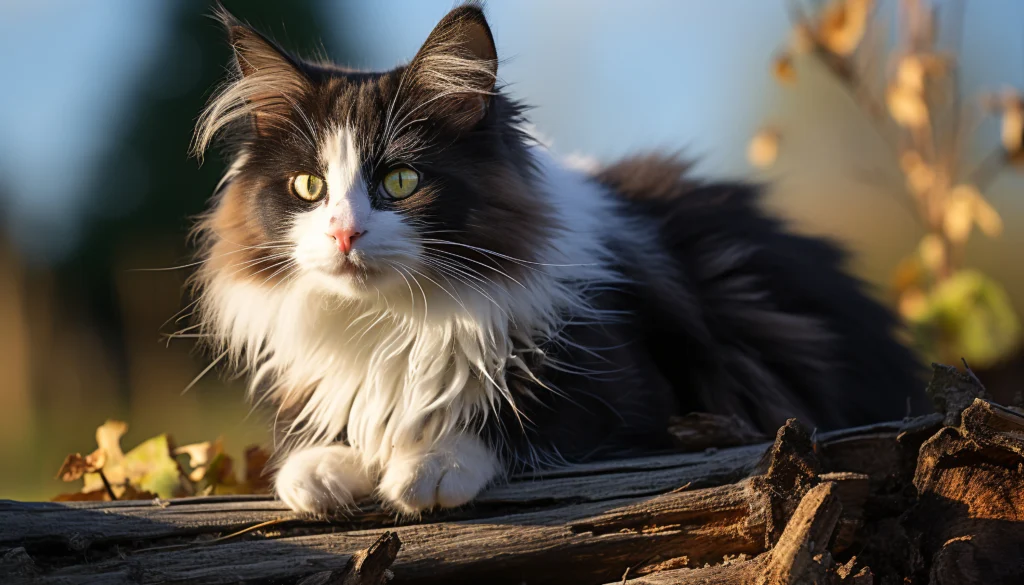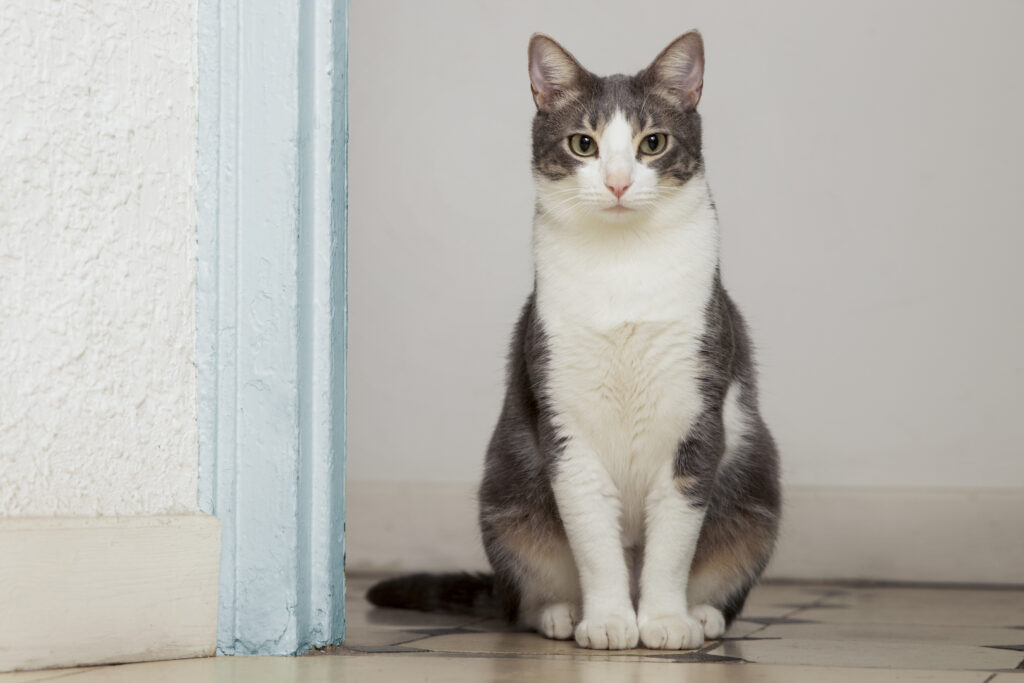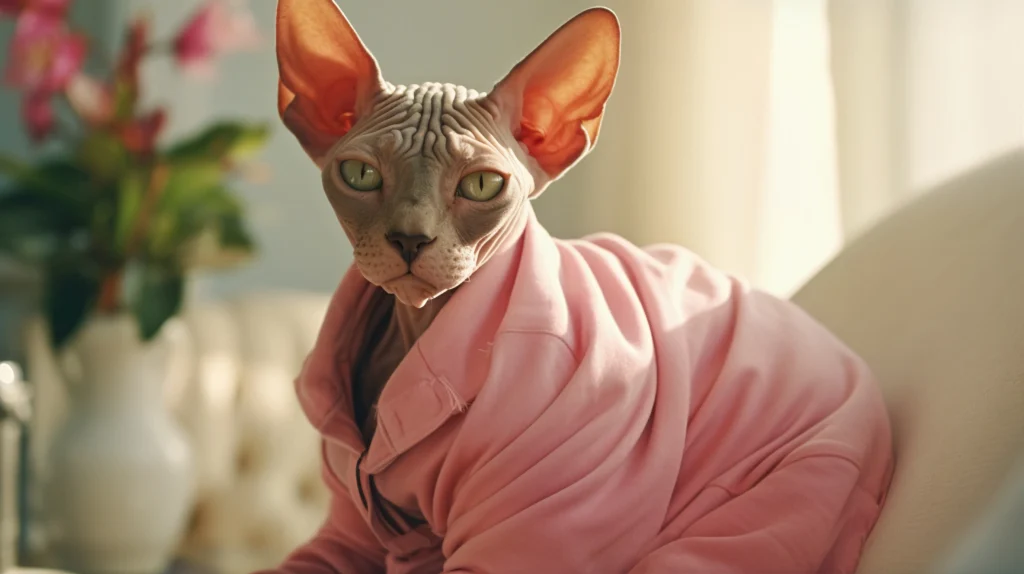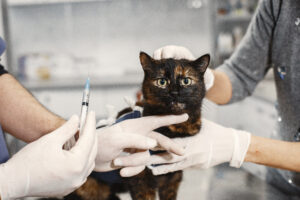Have you ever been captivated by a cat with extraordinarily large ears? These stunning features aren’t just adorable—they’re often hallmarks of specific breeds known for their distinctive appearance. Large-eared cat breeds showcase some of nature’s most impressive feline designs, combining form and function in spectacular ways. In this comprehensive guide, we’ll explore everything you need to know about cats with large ears, from their unique characteristics to their care requirements.

Why Some Cats Have Larger Ears Than Others
Before diving into specific large-eared cat breeds, it’s important to understand the evolutionary purpose behind those magnificent ears. Cats with large ears haven’t developed this trait purely for aesthetic reasons—these oversized auditory organs serve several crucial functions:
Enhanced Hearing Capabilities
The primary function of a cat’s ears is hearing, and large-eared cat breeds often have superior auditory capabilities. Domestic cats with large ears can detect sounds at higher frequencies than many other mammals, including humans. These specialized ears act as satellite dishes, capturing sound waves and funneling them into the ear canal with remarkable precision.
In the wild, cats with big ears gain significant hunting advantages. They can detect the subtle rustling of prey from impressive distances, making them more efficient predators. Even in domestic settings, large-eared cats tend to be more responsive to subtle sounds in their environment.
Temperature Regulation
For many cat breeds with large ears, especially those originating from hot climates, these prominent features also serve as natural cooling systems. The extensive surface area of large ears allows for greater heat dissipation, helping these cats maintain optimal body temperature in warm environments.
This is particularly evident in breeds like the Oriental Shorthair and Abyssinian, whose ancestors thrived in warm regions. Their large ears essentially function as built-in cooling mechanisms—a fascinating adaptation that showcases evolutionary ingenuity.
Visual Communication
Large ears also play a crucial role in feline body language. Cats with large ears can express emotions and intentions through subtle ear movements that might be less noticeable in breeds with smaller ears. From the forward-pointing ears of an attentive cat to the flattened ears of an irritated one, these expressive appendages help cats communicate with both humans and other animals.
Now, let’s explore the most fascinating large-eared cat breeds that have captured the hearts of cat enthusiasts worldwide.
1. The Regal Oriental Shorthair: The Ultimate Large-Eared Cat
When it comes to large-eared cat breeds, the Oriental Shorthair stands as the undisputed champion. This elegant feline boasts some of the largest ears proportional to head size of any domestic cat breed. These extraordinary ears contribute to the Oriental’s distinctive profile and have made it one of the most recognizable cat breeds with big ears in the world.
Characteristics of the Oriental Shorthair
The Oriental Shorthair belongs to the same family as the Siamese, sharing many physical traits but distinguished by its enormous, bat-like ears. These cats exemplify what many consider the perfect combination of large ears and slender bodies, creating a silhouette that’s both exotic and elegant.
Oriental cat breeds with large ears typically share these characteristics:
- Enormous triangular ears that continue the lines of the wedge-shaped face
- Almond-shaped eyes that complement their angular features
- Sleek, muscular bodies with long, tapering lines
- Short, fine coats that come in over 300 color and pattern combinations
- Long, whip-like tails that balance their statuesque appearance
The Oriental Shorthair is the quintessential example of cats with large ears and long tails. Their bodies are the perfect canvas for showcasing those magnificent ears, which stand tall and proud on their wedge-shaped heads.
Personality Traits
Beyond their striking appearance, Oriental Shorthairs are known for their vibrant personalities. These big-eared cats are:
- Extremely vocal and communicative
- Highly intelligent and easily trained
- Deeply devoted to their human companions
- Playful well into adulthood
- Curious about everything in their environment
For those seeking cat breeds with large ears and slender bodies that also make excellent companions, the Oriental Shorthair is an outstanding choice. They form intense bonds with their owners and thrive on interaction, making them ideal pets for dedicated cat enthusiasts who appreciate a talkative, engaging companion.
Care Requirements
Caring for a cat with huge ears like the Oriental Shorthair requires attention to their specific needs:
- Ear cleaning: Those large ears can collect more debris than average, so regular gentle cleaning is essential.
- Environmental enrichment: These intelligent cats need plenty of mental stimulation.
- Social interaction: Orientals don’t do well when left alone for extended periods.
- Temperature management: Despite their origins, these cats are sensitive to cold due to their short coats and lean bodies.
The Oriental Shorthair represents the pinnacle of what many consider the ideal large-eared cat—elegant, intelligent, and unmistakably exotic in appearance.
2. The Abyssinian: Ancient Elegance with Remarkable Ears
Among large-eared cat breeds with historic lineage, the Abyssinian stands out as one of the oldest known domestic cat breeds. These cats combine large ears with a wild appearance that harkens back to their ancient origins. The Abyssinian’s large ears contribute significantly to its alert, attentive expression.
Characteristics of the Abyssinian
The Abyssinian represents what many consider the perfect balance of wild-looking cats with big ears and refined domestication. Their distinctive features include:
- Large, forward-tilting ears set wide apart on a modified wedge-shaped head
- Distinctive ticked coat with each hair featuring bands of color
- Lithe, athletic build with long legs and graceful movements
- Almond-shaped eyes with intense expression, often amber or green
- Medium-length tail that’s broader at the base and tapers to a point
While not as extreme as the Oriental Shorthair, the Abyssinian certainly qualifies as a cat with big ears and small face. Their proportions create an expression of perpetual alertness that cat lovers find irresistible.
Personality Traits
Abyssinians are known for their active, engaging personalities that match their alert appearance:
- Highly active and athletic
- Extremely curious and exploratory
- Intelligent problem-solvers
- Moderately vocal but expressive
- Affectionate without being overly dependent
For those interested in large-eared cat breeds with an active lifestyle, the Abyssinian makes an excellent choice. These cats retain kitten-like playfulness throughout their lives and appreciate interactive play that challenges both their bodies and minds.
Historical Significance
The Abyssinian is often cited as one of the oldest identifiable cat breeds, with a resemblance to the cats depicted in ancient Egyptian art. While modern genetic testing has complicated this narrative, their wild appearance and distinctive large ears continue to evoke connections to African wildcats.
As large ear short hair cats, Abyssinians require minimal grooming despite their exotic appearance. Their ticked coats naturally shed dirt and rarely mat, making them relatively low-maintenance companions despite their sophisticated look.

3. The Savannah Cat: Wild Heritage with Spectacular Ears
For those seeking truly exotic cat breeds with big ears, the Savannah cat delivers a stunning blend of domestic cat convenience with wild serval heritage. These remarkable felines feature some of the most impressive ears in the domestic cat world, immediately evoking their wild ancestry.
Characteristics of the Savannah Cat
The Savannah belongs to a group of hybrid cat breeds with large ears that were developed by crossing domestic cats with wild species—in this case, the African serval. Their distinctive features include:
- Extraordinarily large, upright ears set high on the head
- Long, lean bodies with exceptional height at the shoulder
- Distinctive spotted or marbled coat patterns
- Long legs that contribute to their impressive stature
- Relatively small heads that accentuate their ear size
Savannahs exemplify what happens when domestic cats with large ears are bred specifically to enhance this wild characteristic. The result is one of the most visually striking felines available as a companion animal.
Generation Classifications
Savannah cats are classified by filial generation, which indicates how many generations removed they are from their serval ancestor:
- F1: First-generation crosses (50% serval)
- F2: Second-generation (25% serval)
- F3: Third-generation (12.5% serval)
- F4 and beyond: Later generations with progressively less serval DNA
The earlier generations typically display more pronounced wild characteristics, including the largest ears. As true African cat breeds with big ears, early-generation Savannahs are often regulated by state and local laws due to their wild heritage.
Personality Traits
Savannahs combine the intelligence of domestic cats with some behavioral traits inherited from their wild ancestors:
- Extremely active and athletic
- Capable of impressive jumping heights
- Often enjoy water play, unlike many domestic cats
- Highly intelligent and trainable
- Strong bonding tendency with their chosen humans
For those legally permitted to own them and prepared for their special needs, Savannahs offer a uniquely rewarding experience among large-eared cat breeds. Their striking appearance and engaging personalities make them fascinating companions.
Care Considerations
Owning a cat with bat ears like the Savannah comes with specific responsibilities:
- Legal compliance: Checking local regulations regarding hybrid cats
- Space requirements: Providing adequate room for their active lifestyle
- Enrichment needs: Creating engaging environments with climbing opportunities
- Social interaction: Ensuring sufficient stimulation and companionship
- Specialized diet: Meeting their potentially distinct nutritional needs
Savannahs represent the most wild-looking option among domestic cats with large ears, offering an exotic companion for those prepared for their unique requirements.
4. The Devon Rex: Elfin Charm with Oversized Ears
While the previous breeds combine large ears with sleek, athletic bodies, the Devon Rex takes a different approach, pairing enormous ears with a distinctively compact frame. These cats exemplify the whimsical side of large-eared cat breeds, with an appearance often described as elf-like or pixieish.
Characteristics of the Devon Rex
The Devon Rex stands out among cat breeds with large ears and slender bodies by combining those impressive ears with:
- Soft, wavy coat with a distinctive curl pattern
- High cheekbones and prominent whisker pads
- Large, expressive eyes set wide apart
- Slender neck that accentuates the large head and ears
- Light, delicate bone structure despite their muscular build
As cat breeds with large ears go, the Devon Rex offers a distinctly different aesthetic—less wild and more whimsical than the previous entries on our list.

Coat Peculiarities
What makes the Devon Rex particularly unique among large-eared cat breeds is their unusual coat. Unlike the sleek fur of Orientals or the ticked coat of Abyssinians, the Devon Rex sports a soft, wavy coat caused by a genetic mutation. This gives them a disheveled, elfin appearance that perfectly complements their oversized ears.
Some Devon Rex cats may appear almost hairless in certain areas, particularly warm parts of the body like the ears, neck, paws, and stomach. This makes them somewhat similar to hairless cat with large ears varieties like the Sphynx, though they do retain a fine covering of soft down.
Personality Traits
Devon Rex cats match their playful appearance with equally engaging personalities:
- Highly social and people-oriented
- Playful well into old age
- Intelligent and trainable
- Known for seeking high perches
- Often described as “dog-like” in their loyalty
Among large-eared cat breeds, the Devon Rex stands out for its particularly devoted nature. These cats form intense bonds with their human companions and often want to be involved in everything their owners do.
Care Requirements
Caring for these big-eared kitten breeds requires attention to their specific needs:
- Temperature sensitivity: Their fine coats provide limited insulation
- Ear care: Their large, sometimes sparsely furred ears need regular cleaning
- Oil management: Their skin produces more oil than many breeds, requiring occasional bathing
- Social needs: They thrive on companionship and may become depressed if left alone frequently
The Devon Rex offers a completely different aesthetic among large-eared cat breeds, proving that these magnificent ears can complement a variety of body types and coat styles.
Other Notable Large-Eared Cat Breeds
While the four breeds above represent the most extreme examples of large-eared cat breeds, several other breeds feature impressively sized ears that contribute to their distinctive appearances:
The Sphynx: Hairless Wonder with Prominent Ears

The hairless cat with large ears known as the Sphynx offers perhaps the most dramatic contrast between ear size and body. Without fur to soften their contours, the Sphynx’s ears appear particularly prominent. These cats combine:
- Complete or near-complete hairlessness
- Large, wide-set ears
- Muscular, medium-sized bodies
- Wrinkled skin, particularly around the head and neck
- Long, tapering tails
For those fascinated by large-eared cat breeds but concerned about shedding, the Sphynx offers a unique solution—though they do require special care to protect their exposed skin.
The Cornish Rex: Curly-Coated with Magnificent Ears
Similar to their Devon cousins, Cornish Rex cats feature large ears that complement their distinctive curly coats. These cats represent another variation on the elegant cats with big ears theme, offering:
- Large, high-set ears
- Egg-shaped heads with high cheekbones
- Curly coats with a different mutation than the Devon Rex
- Long, slender bodies with a distinctive arched back
- Long, tapering tails
Cornish Rex cats combine the elegance of long-legged cats with big ears with the playful charm of curly-coated breeds.
The Singapura: Tiny Bodies with Proportionally Enormous Ears
The Singapura might be one of the smallest cat breeds, but their ears are proportionally enormous. These cats offer a different take on large-eared cat breeds, combining:
- Large, slightly pointed ears
- Tiny, compact bodies weighing just 4-8 pounds
- Distinctive ticked coat in a warm sepia tone
- Large, expressive eyes
- Playful, active temperaments
For those with limited space who still want to experience the charm of large-eared cat breeds, the Singapura offers an appropriately scaled solution.
Caring for Cats with Large Ears
Regardless of which large-eared cat breeds capture your interest, these magnificent appendages require special care:
Ear Cleaning Techniques
Cats with large ears tend to collect more debris in their ear canals than their smaller-eared counterparts. To keep your large-eared companion healthy:
- Inspect the ears weekly for signs of dirt, wax buildup, or inflammation
- Clean only the visible parts of the ear using a veterinarian-approved solution
- Never insert anything into the ear canal
- Watch for excessive head shaking or ear scratching, which may indicate problems
Protection from Elements
For many large-eared cat breeds, especially those with fine or sparse coats, those magnificent ears can be vulnerable to:
- Sunburn: Particularly in light-colored or hairless varieties
- Cold: Large ears lose heat quickly in chilly environments
- Injury: The prominent position makes them vulnerable to scratches
Indoor living is generally recommended for most large-eared cat breeds, providing protection from these environmental concerns while allowing their natural behaviors to flourish.
Genetic Considerations
When selecting a large-eared cat breed, be aware that some extreme ear sizes can be associated with genetic health issues. Responsible breeders prioritize health over extreme physical characteristics and can provide information about genetic testing performed on their breeding stock.
Why Choose a Large-Eared Cat Breed?
With so many wonderful cat breeds available, what makes large-eared cat breeds particularly special companions?
Aesthetic Appeal
There’s no denying the visual impact of large-eared cat breeds. These cats make striking additions to any household and often become conversation pieces when visitors arrive. For those who appreciate distinctive feline beauty, cats with large ears offer unparalleled aesthetic appeal.
Personality Correlations
Many large-eared cat breeds share certain personality traits that make them particularly engaging companions:
- Intelligence: Many large-eared breeds rank among the most intelligent felines
- Curiosity: Those prominent ears often match equally prominent inquisitive tendencies
- Playfulness: Many retain kitten-like energy well into adulthood
- Affection: Several large-eared breeds form especially strong bonds with their humans
Special Connections
Many owners of large-eared cat breeds report a special sense of connection with these distinctive felines. Whether it’s the expressiveness of those mobile ears or simply their unique appearance that initially attracts admirers, large-eared cats often inspire particularly devoted human-feline relationships.
Finding Your Perfect Large-Eared Companion
If you’ve been captivated by large-eared cat breeds and are considering adding one to your family, here are some important steps to take:
Research Thoroughly
Each large-eared cat breed has distinct personality traits, care requirements, and potential health considerations. Before committing to a specific breed:
- Read breed profiles from multiple sources
- Connect with breed-specific rescue organizations
- Attend cat shows where you can meet examples in person
- Join online communities devoted to your breed of interest
Consider Adoption
While some large-eared cat breeds are rare and primarily available through breeders, many can be found through rescue organizations. Breed-specific rescues often have purebred and mixed cats available for adoption, including:
- Adult cats whose personalities are already established
- Kittens from accidental litters
- Retired show or breeding cats looking for forever homes
Prepare Your Home
Before bringing home a large-eared cat breed, ensure your living space accommodates their needs:
- Vertical space: Many large-eared breeds enjoy climbing
- Interactive toys: To engage their often-high intelligence
- Cozy retreats: Particularly important for breeds with temperature sensitivity
- Safe exploration opportunities: To satisfy their typical curiosity
Conclusion: The Enduring Appeal of Large-Eared Cat Breeds
Large-eared cat breeds continue to captivate cat enthusiasts with their striking appearance and engaging personalities. Whether you’re drawn to the exotic elegance of the Oriental Shorthair, the ancient dignity of the Abyssinian, the wild allure of the Savannah, or the whimsical charm of the Devon Rex, these distinctive felines offer unique companionship experiences.
Their oversized ears aren’t just visually striking—they’re functional adaptations that enhance these cats’ abilities and contribute to their expressive communication. From improved hearing capabilities to efficient temperature regulation, those magnificent ears serve important biological functions while creating unmistakable silhouettes.
For those ready to welcome a large-eared cat into their lives, the reward is a distinctive companion whose appearance is matched only by their engaging personality. These cats don’t just look special—they offer special relationships with the humans fortunate enough to share their lives.
Whether you’re considering your first feline companion or adding another cat to your household, large-eared cat breeds deserve consideration for their unique combination of visual impact and personality traits. With proper care and attention to their specific needs, these magnificent cats can bring years of joy, companionship, and distinctive feline charm to the right homes.
FAQs About Large-Eared Cat Breeds
Are large-eared cat breeds more prone to ear infections?
While their ear structure doesn’t necessarily make them more prone to infections, large-eared cat breeds do collect more debris in their ears. Regular inspection and gentle cleaning of the visible portions of the ear can help prevent problems before they start.
Do cats with large ears hear better than other cats?
In many cases, yes. Large-eared cat breeds often have superior hearing abilities, capable of detecting sounds at higher frequencies and from greater distances than their smaller-eared counterparts.
Are large-eared cat breeds more vocal than average?
Some large-eared breeds, particularly those related to Siamese cats like the Oriental Shorthair, tend to be quite vocal. However, this varies significantly between breeds and individual cats.
Do all large-eared cat breeds have short hair?
No, while many prominent large-eared cat breeds have short coats, varieties like the Maine Coon feature both substantial ear tufts and long, luxurious fur. Large ears appear across various coat types.
Are large-eared cat breeds more expensive than average?
Rare large-eared cat breeds like early-generation Savannahs can command premium prices. However, many large-eared breeds fall within typical purebred cat price ranges, and mixed breeds with prominent ears may be available through rescue organizations.
At PetsPump, we’re dedicated to helping you find the perfect feline companion for your lifestyle. Explore our comprehensive guide to cat breeds to discover more fascinating felines that might capture your heart.






